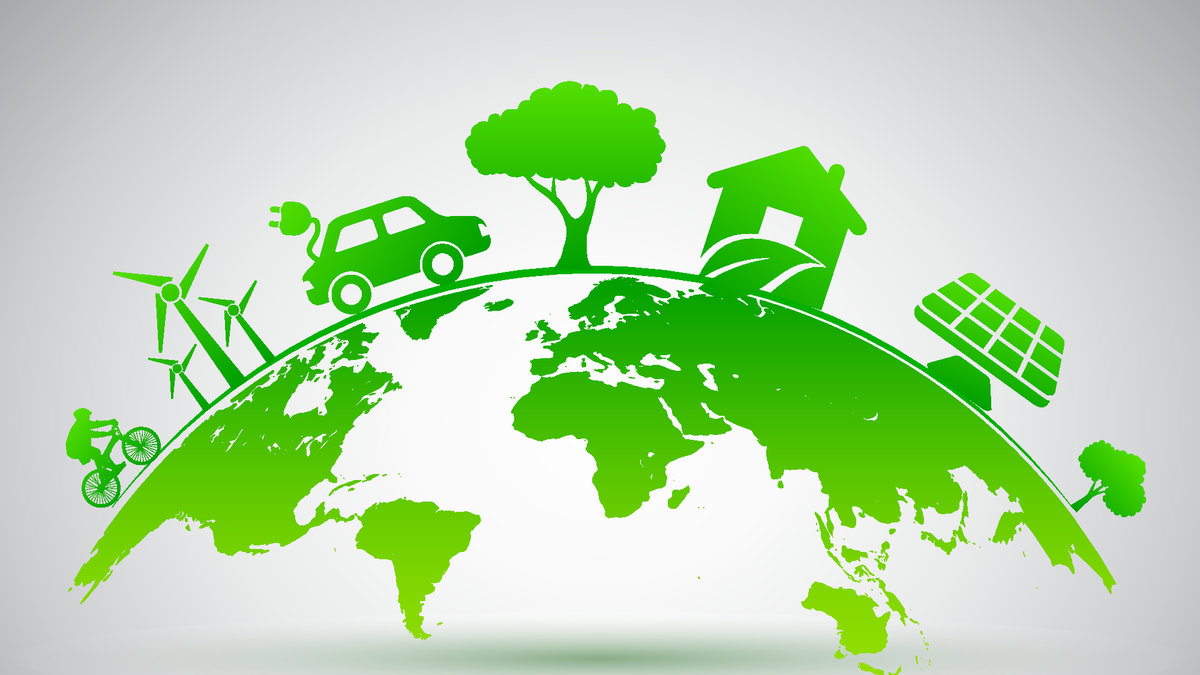Each of us makes many small decisions every day, from how we get to work to what we eat for dinner. Multiplied across the globe, these actions add up to a big impact on the environment. The latest Intergovernmental Panel on Climate Change (IPCC) Report predicts that global warming will increase to 1.5C over the next few decades, and if greenhouse gas emissions are not quickly reduced, it will be impossible to limit the warming to 1.5C or even 2C.
With 1.5C warming, we will see extended summers and shorter winters, and the extreme temperatures of a 2C global warming will cause heat extremes for agriculture and health, according to the report.
However, you can help slow down the impact and make a positive change on the environment by taking simple steps to cut down on energy consumption.
Here are seven easy ways that you can #MakeTheSwitch to help reduce your energy use:
1. Use public transportation or ride a bike.
Instead of taking your car by yourself, consider more earth-friendly ways to commute, such as public transportation. In addition to lowering energy consumption, you can make better use of your time — either catching up on work or reading a book — instead of battling traffic.
According to the American Public Transportation Association, the United States saves 6 billion gallons of gas with public transportation. Don’t have access to public transportation? Consider biking to work to save energy and time by getting your workout during your commute.
2. Reduce the temp on your water heater.
You can save energy by simply pushing a button (or two). The U.S. Department of Energy found that many manufacturers set the thermostat of water heaters at 140F. However, most households only need the temp set at 120F for comfortable bathing and daily chores. By lowering the temperature, you can save up to 22% of heating energy each year.
3. Switch to LED lightbulbs and energy-efficient appliances.
By using energy-efficient products, you can make an impact on your energy bill as well as the environment. An easy step is changing your lightbulbs to LED, which the U.S. Department of Energy reported uses 75% less energy. Because LED bulbs last 25% longer than incandescent lighting, you also save time and money on replacing lightbulbs.
When you buy a new appliance, whether an oven or a washing machine, you aren’t just paying the purchase price but also the energy costs to run it over the next 10 to 20 years. Look at the Energy Guide on all appliances to get data on energy usage. Consider purchasing Energy Star appliances, which means the appliance meets strict guidelines for energy efficiency.
4. Try batch cooking or heat-free meals.
When hunger strikes, it’s easy to forget about the environmental and energy impact of our choices. However, the U.S. Energy Information Administration found that 79% of U.S. households cook at least one hot meal each day, which uses a significant amount of energy. Additionally, the U.S. Department of Energy estimates that Americans use 15% of their daily energy in the kitchen.
Start replacing hot meals each week with heat-free meals. While we often think of sandwiches, you have many other options, such as salads, no-bake cheesecake, charcuterie and sashimi. You can also reduce cooking energy by using batch cooking, where you cook a large batch of a food, such as chicken or beef, and then use the food in multiple meals, which reduces the amount of cooking required.
5. Lower your thermostat.
The U.S. Department of Energy found that Americans use the highest percentage of energy each day, about 32% of their daily use, on heating and cooling their house. By turning back your thermostat 7-10°F for eight hours a day from its normal setting, you can save up to 10% a year on energy costs. Even changing the temperature 1 F can reduce your electricity usage. By using an Energy Star-rated smart thermostat, you can save even more energy, as the device automatically changes the setting to balance energy, with comfort based on the time of day, your habits and the current temperature.
6. Use the energy-saving setting on your devices.
Many devices, such as computers and smartphones, have energy-saving features that lower unneeded functionality to save energy. For example, the screen might be a little less bright. By using these settings, you can save energy on charging and powering your device, which adds up to big savings. When purchasing new devices, look for products that offer this ability and compare energy savings to make the biggest impact.
7. Switch to heat-free printing technology.
Laser printing uses a complex eight-step process to produce its images. Two of the eight steps involve applying heat to the fusing element, which adds to laser printing’s energy use. However, inkjet printing with heat-free technology uses considerably less energy by not requiring heat in the ink ejection process. By instead applying pressure, the Piezo element flexes backward and forward, firing the ink from the printhead.
Heat-free printing provides many benefits, such as minimal maintenance parts, which can reduce costs and intervention. Because the printer doesn’t have to warm up, which saves time, there’s no more waiting around. Additionally, the printer features low power consumption by not having to preheat the fuser.
By starting today, you can help make a big difference. The more people that #MakeTheSwitch to use less energy at home, in the office and everywhere in between, the more positive changes we will see in the environment.
